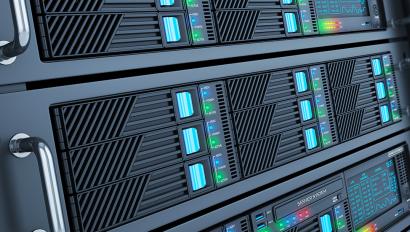Harness the Power of AI and IoT to Proactively Safeguard Your Assets

In a rapidly changing business environment, safeguarding your assets requires more than just reacting to threats. By gleaning operational insights from security infrastructure, companies can act more proactively and predictively in their business. This empowers greater agility and turns security into a source of competitive advantage.
By gleaning operational insights from security infrastructure, companies can act more proactively and predictively in their business.
Harnessing artificial intelligence (AI) and the Internet of Things (IoT) together gives businesses the tools to use physical assets in these transformative ways. Leaders who combine these technologies can increase value while reducing risk.
How Do IoT and AI Work Together?
According to a survey by Accenture, nearly 80 percent of companies view AI as a core or secondary component of IoT. The volume and velocity of data generated by IoT overwhelms human processing abilities. AI helps people quickly make sense of the data and use it for fast decision-making. The top applications for combining the two are:
- Prescriptive and predictive maintenance;
- Improvement of user experience;
- Recognition and interpretation of images;
- Natural language processing
The most cited benefits of pairing IoT and AI include greater productivity and efficiency; deeper customer relationships; and stronger safety and security, according to the survey.
The effects are synergistic. For example, a company with IoT capabilities can forecast when a machine will need a part replaced, avoiding costly downtime and making maintenance more efficient.
Adding AI analytics enriches decision-making and answers multivariable questions. For instance: Given performance forecasts and design improvements in equipment, when is it smarter to replace instead of maintaining a machine?
AI and IoT Use Cases
Businesses are applying these partner technologies in manufacturing, logistics, and retail security in ways that enable them to predict business conditions and gain a competitive advantage. This results in risk-reduced decision-making.
Manufacturing
In quality assurance, manufacturers can employ IoT and AI to analyze real-time images of a production line and identify output that does not meet their standards. These products are automatically diverted for rework or discard. This raises quality, prevents wasted materials, decreases returns, and improves customer satisfaction. Companies may already utilize video analytics with their security infrastructure, and quality control presents another application for this technology.
Similarly, monitoring systems become more valuable. AI can correlate sensor information on voltage, moisture, or the presence of people to expected use patterns, weather, time of day, or other factors. This context helps the system accurately recognize an urgent problem. For example, reports of heavy rain at a site plus high moisture levels likely mean sump pump failure, not a maintenance worker mopping the floor.
Logistics
Just-in-time supply chains become seamless with IoT sensors and AI analytics. The value chain from procurement to vendor, warehouse, and distribution integrates more tightly. This enables smooth, continuous production, tighter handoffs, and a better balance between supply and demand. The net impacts include cost savings, higher profit margins, and greater agility.
Retail
Store operators can strengthen retail loss prevention programs and retail security using IoT and AI. AI-powered analysis finds patterns indicative of theft in sensor data and video of traffic patterns, employee and shopper behaviors, and point-of-sale events. The areas of highest risk are cash registers, entrances, and stockrooms. For example, customers exiting through entrances can often be a sign of shoplifting, so direction detection sensors are an important tool. At self-checkout lanes, video analysis of items in a shopper’s basket can be matched with a flow of scan data from the terminal. This catches products that were not scanned or left in carts. Video analysis can also flag suspicious employee behavior such as issuing a refund when no customer is detected at the counter.
Top Developments for Safeguarding Assets
As organizations harness these technologies, they can leverage existing infrastructure and other resources to generate more actionable insights. This improves total return while safeguarding assets.
As organizations harness these technologies, they can leverage existing infrastructure and other resources to generate more actionable insights. This improves total return while safeguarding assets.
For example, IoT and AI alerting solutions may require human responses to notifications. False alarms and a high volume of alerts can lead to notification fatigue. Monitoring and surveillance infrastructure already in place for asset security can provide another layer of response capability, making sure significant developments are not missed. In this way, your investment in safeguarding assets offers added business value in the form of flexibility and agility.
Moreover, companies can integrate a wealth of data sources beyond internal information for richer insights as technology evolves. These include weather reports, public records, economic forecasts, and political risk intelligence, among other sources. Organizations can better anticipate supplier problems, production issues, demand fluctuations, transportation bottlenecks, and industry trends. Combining this with intelligence from internal data, users gain a 360-degree view of their threat environment and competitive landscape.
How to Leverage AI and IoT
As companies accelerate digital transformations, the ability to act proactively and predictively becomes an organizational imperative. Safeguarding assets moves beyond a reactive stance and centers on a proactive and predictive posture. Combining artificial intelligence with the Internet of Things is a crucial step toward maximizing assets while reducing risk.
Disclaimer: By using the Blog section of this website (“Blog”), you agree to the terms of this Disclaimer, including but not limited to the terms of use and our privacy policy. The information provided on this Blog is for information purposes only. Such information is not intended to provide advice on your specific security needs nor to provide legal advice. If you would like to speak to a Security representative about your specific security needs, please contact us.























